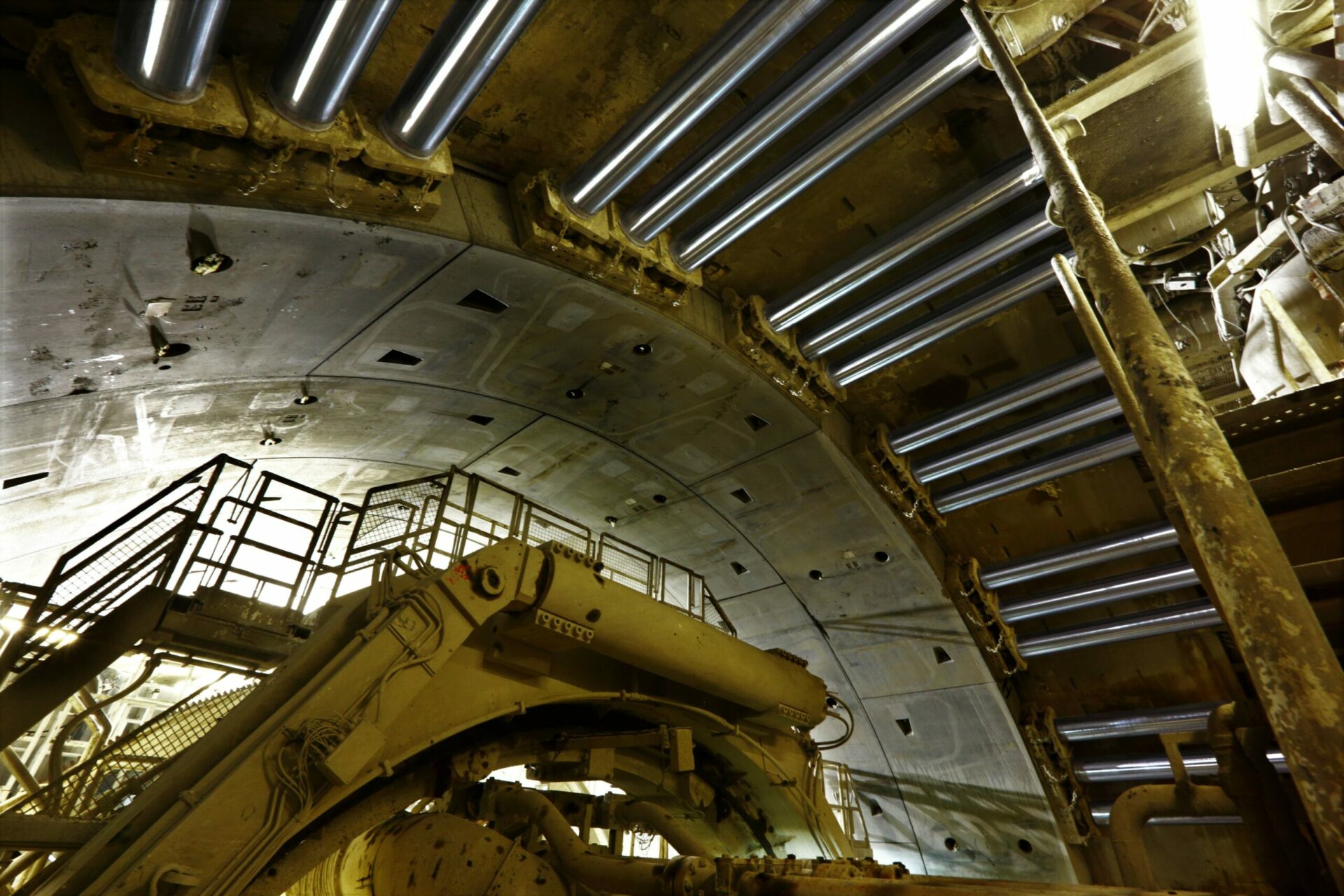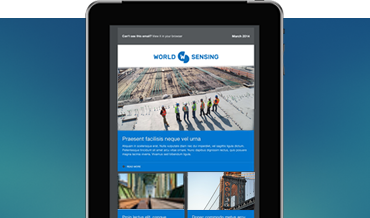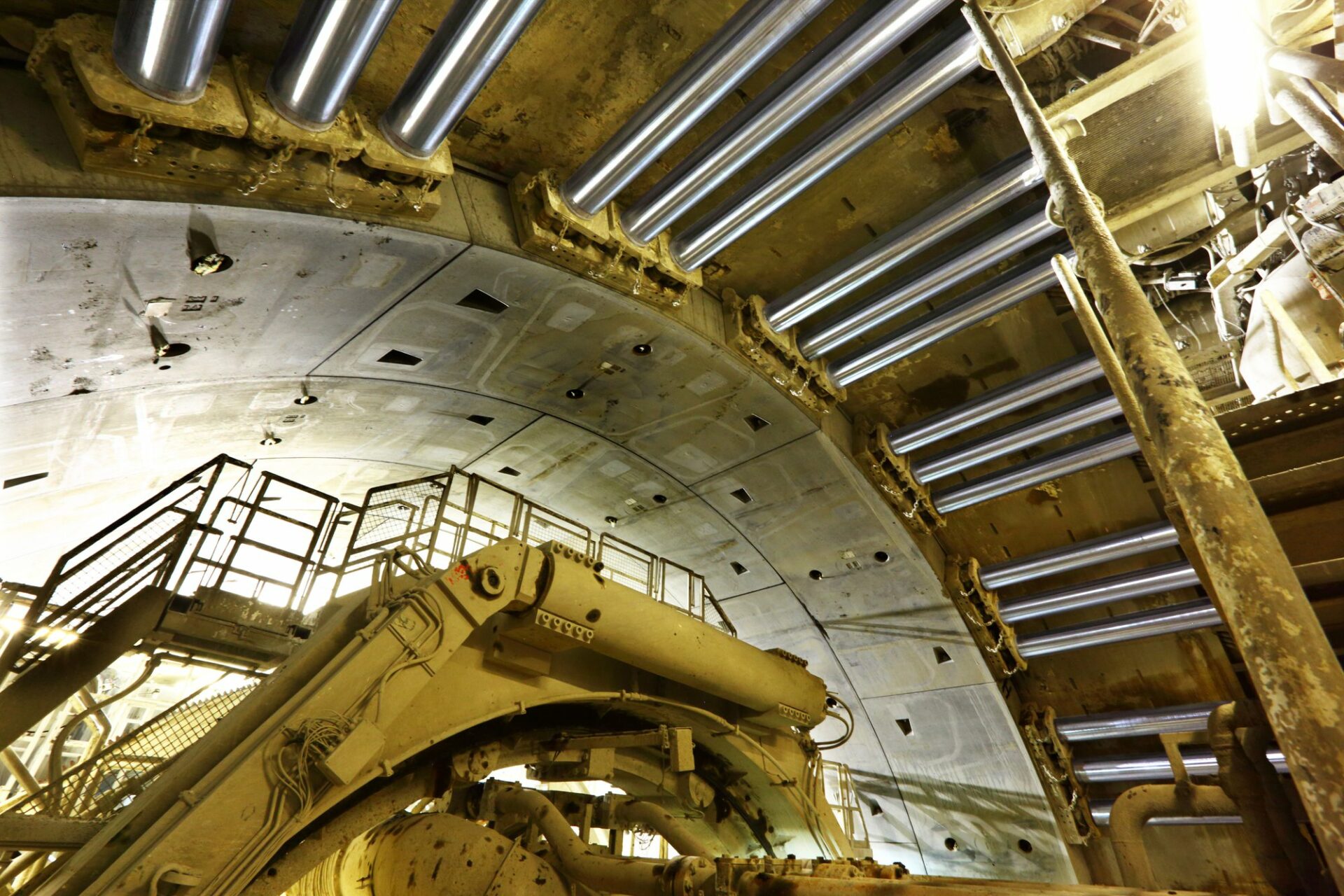Smart tunnel linings: Everything you need to know
Being able to monitoring the integrity of tunnel segments through IoT technology promises major safety and efficiency gains in civil engineering. The idea is simple: instead of installing monitoring equipment once a tunnel has been dug, why not pre-install the sensors and data loggers in the tunnel lining itself from as early as the lining production phase? Given the importance of this innovation, it is unsurprising that a webinar on the smart tunnel concept, hosted by Worldsensing in November, was lively and well attended. Worldsensing experts Sam Buckley, Bastien Hardouin and Juan Pérez Arcas were on hand to answer questions.
Here are the top queries and their answers. For more information, listen now to the whole smart tunnel session.
Questions
Is the structural integrity of the smart tunnel compromised when you embed these devices?
How many gateways do I need to cover an entire project?
Can you do any maintenance on the devices if they are embedded in concrete?
We have a project starting in a few months. How quickly can this be deployed?
How easily can we change sampling rates? And can we do this without having to plug the phone in?
How thick can a layer of concrete be over the top of the node before the node will not be able to communicate with the gateway?
How many sensors can you connect the same time?
Do you need to reconfigure the logger with each gateway?
Is it possible to extend the wires out of the device box to be directly measured without using a lifter?
Is the structural integrity of the smart tunnel compromised when you embed these devices?
Juan Pérez Arcas: The dimensions of the box are quite small if you compare it with a smart tunnel segment. The dimensions are 200 by 120 by 57 mm, so the structural effects are limited to the area close to the box. In the Grand Paris project, it was the designer who validated if the possible structural effects on the tunnel lining were acceptable. They were.
In addition, we did a preliminary evaluation with the University of Catalonia, considering a 350 mm depth of segment. The effects were negligible, considering the load cases that were evaluated. However, we recommend that for each particular project these points should be considered and specifically evaluated. It has to be evaluated case by case. The size is not very different to a typical junction box that is used in the traditional methods used for instrumenting these types of segments.
How many gateways do I need to cover an entire project?
Juan Pérez Arcas: It depends on the smart tunnel project and the monitoring needs. We recommend having a gateway in the precast manufacturing plant because it’s quite useful during the installation of the sensors and the data logger, to be sure that everything is working fine. The gateway can be temporarily temporarily installed there during the installation of sensors in the segments. In the storage areas sometimes it can be interesting to have a gateway, so you have good traceability of the instrumented segment.
The most important gateway has to be installed in the TBM [tunnel boring machine], close to the cabin, or wherever possible. Later on, and depending on the ranges, if you do want to continue monitoring you can install an additional gateway in the tunnel. The most important one is the gateway in the TBM and depending on the project maybe it makes sense to install additional gateways.
Can you do maintenance on the devices if they are embedded in concrete?
Bastien Hardouin: Yes. The devices are embedded in the surface of the concrete blocks. By chiseling out the concrete layer, you can access the cover of the enclosure and the data logger. If you need to change the battery, for example, you just have to remove the gel. Our gel is very common in electrical applications and can be easily removed by hand or with a cutter.
You can do any maintenance by removing the gel or accessing the USB, for example to collect data, change the configuration [or] sampling rate—even if changing the sampling rate is possible by other means.
We have a project starting in a few months. How quickly can this be deployed?
Sam Buckley: We have a small level of stock for smaller smart tunnel projects, maybe to get started with. If you have a big requirement—hundreds if not thousands—we suggest a two-month lead time to get these ready for you. The sooner we know the better, so get in contact in the early stages and let’s have that conversation.
How easily can we change sampling rates? And can we do this without having to plug the phone in?
Juan Pérez Arcas: The radio that we use is a bidirectional radio, so it is possible to change the sampling rate of the nodes. As of today, the highest frequency of acquisition that is feasible for the vibrating wire data loggers is every 30 seconds, for all the channels of the data logger. To change the sampling rate, you can go to the CMT software, select the node and change the sampling rate. The sampling rate will be updated in the next data transmission from the data logger to the gateway.
This makes sense in terms of adjusting the sampling rate according to the needs of each of the stretches of the tunnel.
How thick can a layer of concrete be over the top of the node before the node will not be able to communicate with the gateway?
Bastien Hardouin: We recommend installing the vibrating wire pressed against the mold used to manufacture the concrete segments. The layer of concrete on top of the vibrating wire should be as thin as possible. The vibrating wire is pressed against the mold and the concrete is poured over.
How do you calibrate the sensor after the installation and erection of the segments?
Juan Pérez Arcas: Probably this question is more for vibrating wire sensor manufacturers. These vibrating wire strain gauges are designed to be embedded in concrete. They have been installed, for a long time, in concrete dams and other concrete structures, so it’s a proven technology with good stability for long periods of time.
You do not need to recalibrate the sensor, and in fact there is no possibility of recovering the sensor after it is embedded in the concrete. This will be the same when you install the sensor in a concrete lining or a dam. You have the original calibration, but the sensor is not recalibrated.
How many sensors can you connect at the same time?
Bastien Hardouin: It’s possible to connect five sensors at the same time. You just have to remove the battery pack, connect the sensor—it’s easy—and put it back with the battery on it. The terminal block is plugged into the printed circuit board, and it’s easy to unplug it, connect your sensor and put it back.
Do you need to reconfigure the logger with each gateway?
Juan Pérez Arcas: At Worldsensing, we have two architectures. We have the CMT Edge architecture, where our software is hosted in the gateway. And we have a CMT Cloud architecture where it’s in the cloud. The Connectivity Management Tool manages the radio network, collects the data and makes all this data accessible for further analysis.
The CMT Cloud is our multi-gateway architecture. The connection of the logger to one of the gateways doesn’t matter, because all the gateways will be transmitting the data to the cloud. This architecture is the best one for these types of projects, but if for any reason it is not possible to connect through Internet and you need to use our edge architecture it’s also possible. You can configure the same network ID and radio network password on several gateways.
We are going to include a new feature in the coming version 2.7 that will also be useful for this type of projects. So the answer is that it’s better to do it with the CMT Cloud architecture but with CMT Edge it’s also possible to connect without accessing through the logger. The logger is configured in the manufacturing plant.
Is it possible to extend the wires out of the device box to be directly measured without using a lifter?
Bastien Hardouin: It would be possible, but it will not be easy. To extend the cables, you will have to access the cables first. So you will have to chisel out the concrete layer, open the enclosure, remove the gel, disconnect the sensors and make another connection to extend the cables. So it’s possible, but complicated.
Juan Pérez Arcas: It would be better to use the wireless data loggers for the monitoring of these sensors.


